At first glance, the pergola in the image speaks volumes about skilled craftsmanship. The thick wooden beams and columns suggest the use of high-quality timber, likely treated to withstand the elements. The lattice design on the roof, created by a series of horizontal slats, provides a balance between shade and sunlight, allowing for a dynamic play of light throughout the day.
The meticulous joinery ensures structural integrity while maintaining a clean and polished appearance. The beam-to-post connections are precise, likely reinforced with hidden fasteners or traditional joinery techniques. The visible grain of the wood enhances the natural beauty of the structure, creating a warm and inviting atmosphere.
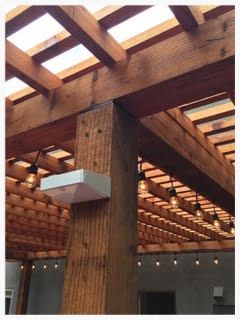
Architectural and Aesthetic Value
Wooden pergolas like the one depicted serve as transitional spaces between indoor and outdoor environments. They extend the usable area of a home or commercial property, offering a semi-open space that can be used for relaxation, dining, or social gatherings.
The visual appeal of this pergola lies in its simplicity and harmony with the surrounding environment. The use of natural wood complements outdoor settings, blending seamlessly with greenery and landscaping elements. The exposed beams and open latticework create a sense of openness while providing a defined structure, striking a balance between enclosure and freedom.
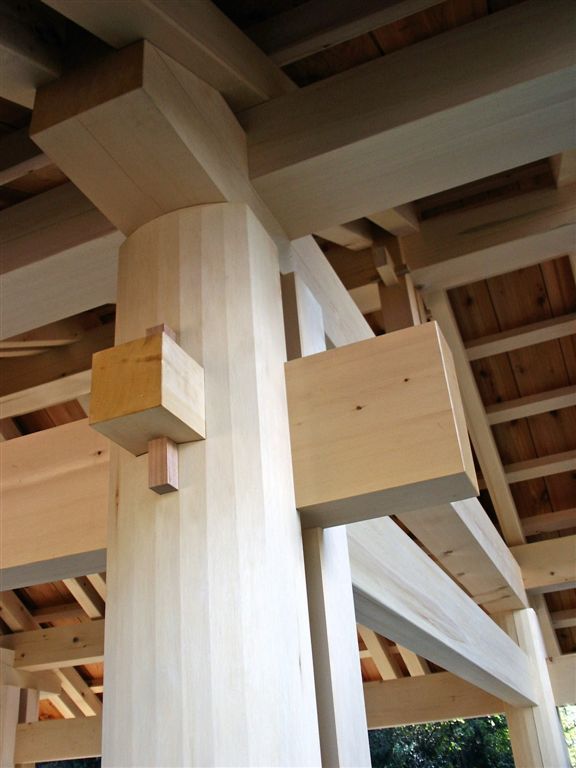
Functional Considerations
Beyond aesthetics, pergolas offer practical benefits. The partial shading provided by the slatted roof protects against harsh sunlight while allowing for ventilation. This makes the space comfortable even during warmer months. Additionally, the structure can support various additions such as climbing plants, hanging lights, or fabric canopies, enhancing both functionality and visual interest.
In the image, string lights are elegantly draped across the pergola, adding a touch of ambiance. This not only enhances nighttime usability but also contributes to the overall charm of the space. The integration of lighting elements showcases thoughtful design, turning the pergola into a versatile area suitable for various occasions.
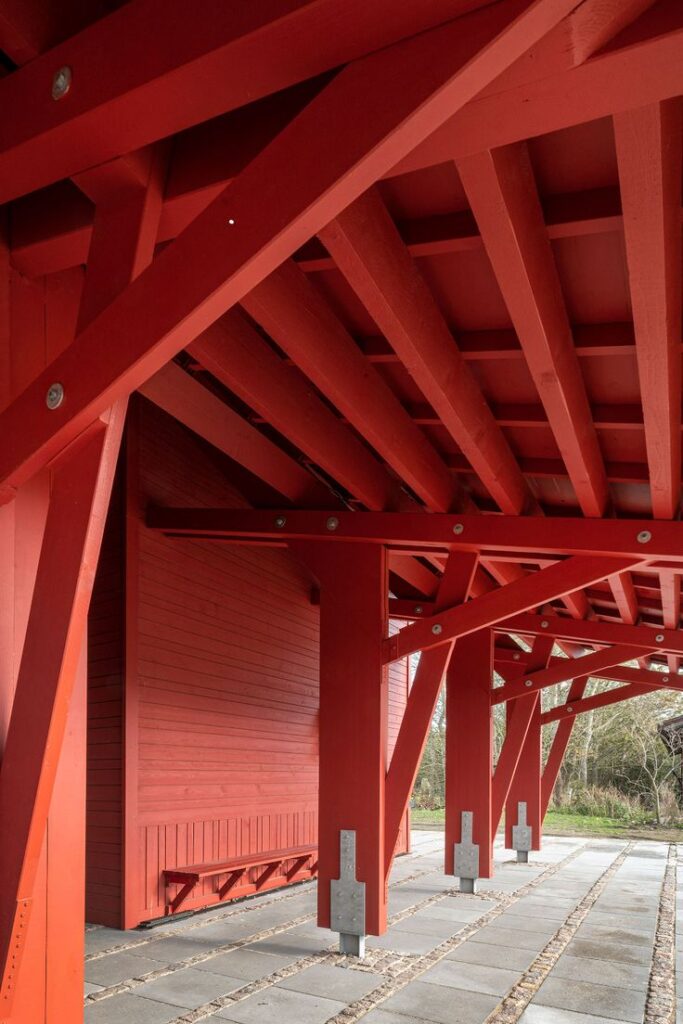
Material Selection and Durability
Choosing the right wood is crucial for pergola construction. The structure in the image appears to use a durable hardwood or pressure-treated softwood, both common choices for outdoor applications. These materials are selected for their resistance to decay, insects, and weathering.
Proper finishing is equally important. The wood likely features a protective sealant or stain that enhances its natural beauty while providing a barrier against moisture and UV rays. Regular maintenance, such as reapplying sealant and inspecting for wear, ensures the longevity of the pergola.
Design Flexibility
One of the key advantages of pergolas is their design flexibility. They can be tailored to suit various architectural styles and personal preferences. The pergola in the image embodies a classic, rustic charm, but similar structures can be adapted to modern, minimalist, or Mediterranean aesthetics.
Customization options extend to size, shape, and decorative elements. Homeowners and designers can choose from freestanding or attached configurations, integrate built-in seating or planters, and experiment with different roofing patterns. This adaptability makes pergolas a popular choice for enhancing outdoor spaces.
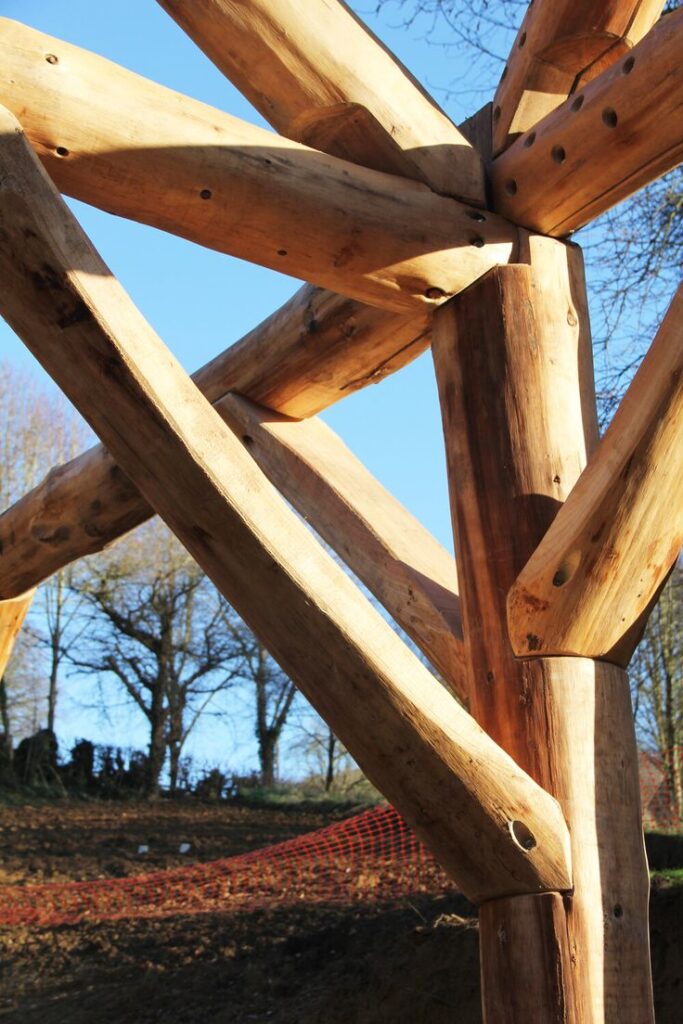
Enhancing Outdoor Living
Pergolas play a pivotal role in transforming outdoor areas into functional living spaces. They create a sense of place and purpose, encouraging outdoor activities and fostering social interaction. Whether used as a dining area, lounge, or garden feature, pergolas enrich the outdoor experience.
In residential settings, pergolas often serve as extensions of the home, bridging the gap between interior comforts and the natural environment. In commercial contexts, they enhance the appeal of restaurants, cafes, and event venues, providing inviting spaces for patrons.
Sustainability and Environmental Impact
As sustainability gains importance in construction practices, the choice of materials and design approaches for pergolas comes under consideration. Using responsibly sourced wood and eco-friendly finishes aligns with sustainable principles. Additionally, incorporating features like rainwater collection or solar-powered lighting can further reduce the environmental footprint of pergola installations.
Designing for longevity is another aspect of sustainability. A well-constructed pergola, like the one shown, minimizes the need for frequent replacements and repairs, conserving resources over time. Thoughtful maintenance practices contribute to the structure’s durability and environmental friendliness.
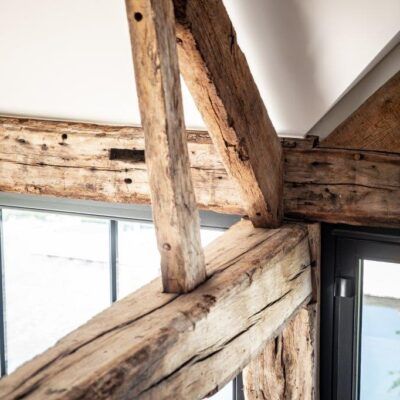
Cultural and Historical Context
Pergolas have a rich history, with origins dating back to ancient civilizations. In Roman and Egyptian gardens, pergola-like structures provided shaded walkways and supported climbing plants. The concept evolved through the Renaissance period, becoming a staple in European garden design.
Today, pergolas continue to draw inspiration from their historical roots while embracing contemporary innovations. The blend of tradition and modernity seen in the image reflects this evolution, showcasing how timeless design elements can be adapted to current lifestyles.
Conclusion
The wooden pergola depicted in the image is more than a structural element; it is a testament to craftsmanship, design, and the enduring appeal of outdoor living spaces. Its carefully constructed beams, harmonious aesthetics, and functional versatility exemplify the qualities that make pergolas a cherished addition to homes and commercial properties alike.
As architectural trends continue to embrace outdoor connectivity and sustainable practices, pergolas will remain integral to creating inviting, multifunctional environments. Whether through enhancing residential gardens or elevating commercial venues, these structures embody the timeless allure of blending built spaces with the natural world.


